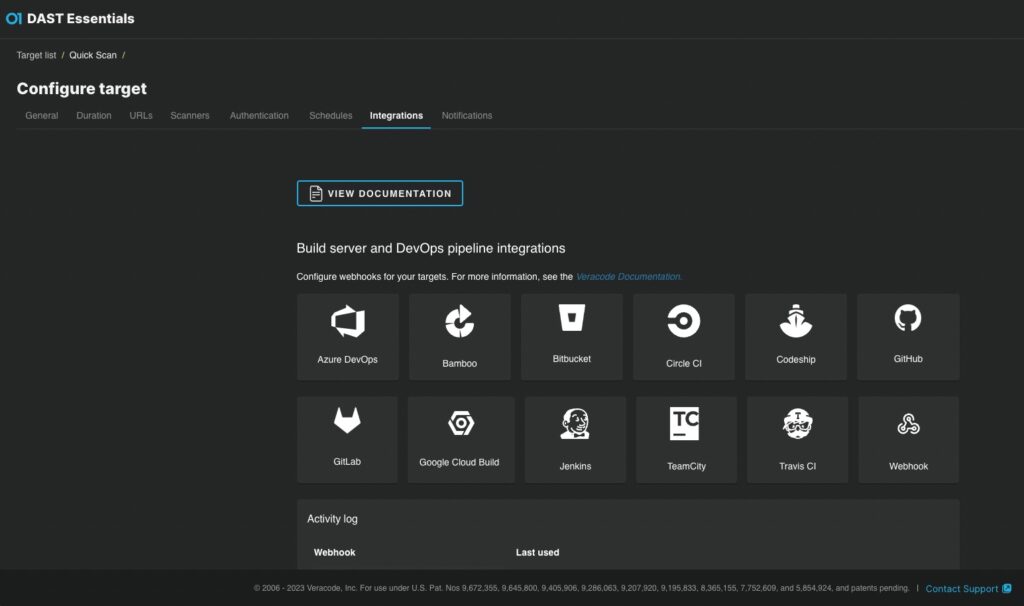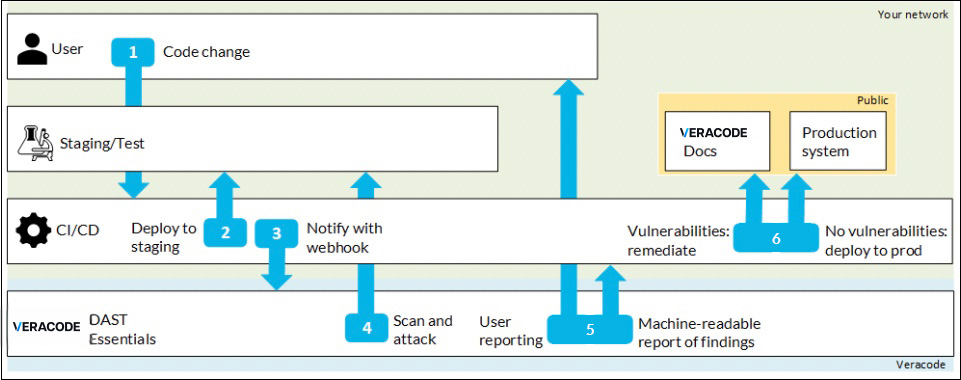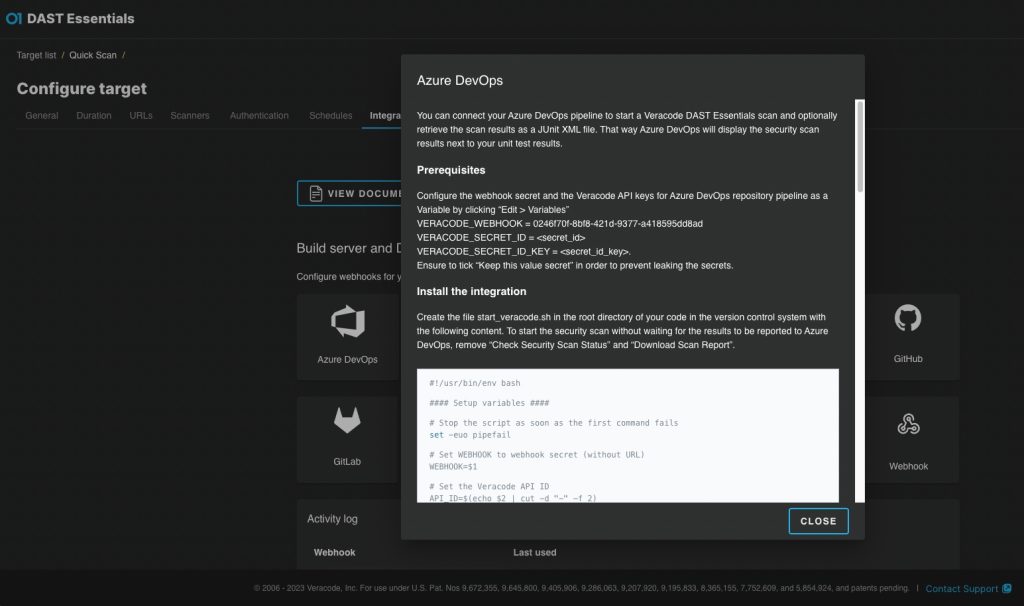In today’s fast-paced digital landscape, developers face increasing pressure to deliver secure applications within tight deadlines. With the emphasis on faster releases, it becomes challenging to prioritize security and prevent vulnerabilities from being introduced into production environments.
Integrating dynamic application security testing (DAST) into your CI/CD pipeline helps you detect and remediate vulnerabilities earlier, when they are easier to fix. In this blog, we will explore the importance of DAST, provide a step-by-step guide on how to integrate Veracode DAST Essentials into your CI/CD pipeline, and show you how to get started with a free, 14-day trial of DAST Essentials today.
The Significance of DAST
DAST plays a vital role in securing modern applications. Shockingly, according to Veracode’s State of Software Security Report, 80% of web applications have critical vulnerabilities that can only be identified through dynamic testing.
By simulating real-world attacks, DAST effectively uncovers exploitable runtime vulnerabilities in web applications and APIs. Integrating DAST into development workflows empowers you to proactively address these vulnerabilities before releasing applications, helping to prevent breaches and minimize the risk of critical vulnerabilities going unnoticed.
Integrating DAST Essentials into Your CI/CD Pipeline
Integrating DAST Essentials into your CI/CD pipeline allows you to discover runtime vulnerabilities in real-time within your development environment. With Veracode DAST Essentials, you can seamlessly integrate security testing into popular development tools such as Azure DevOps, GitHub, and Jenkins using webhooks that are provided within your target configurations.

Below outlines the developer workflow when you use webhooks to integrate with DAST Essentials with your CI/CD pipelines.
- Start by committing your code or triggering your CI/CD pipeline through another event.
- Your CI/CD toolchain deploys your code to your staging/test system.
- After building your staging system, your CI/CD pipeline uses a webhook to trigger the DAST Essentials scan.
- DAST Essentials scans your newly built system and launches the attack vector scanners to identify vulnerabilities.
- DAST Essentials provides comprehensive reports in PDF, JUnit, or CSV format. These reports can be pulled back in the CI/CD toolchain through your webhook.
- Based on your own set of rules, you can let builds fail if certain conditions are met, such as the number or severity of detected vulnerabilities.

If DAST Essentials finds any vulnerabilities, you can quickly fix them using the integrated documentation, which includes specific code examples to remediate issues quickly. If no vulnerabilities are detected, your CI/CD toolchain can proceed to deploy the new code to your production system.
DAST Essentials makes it easy to integrate security testing into your CI/CD pipeline. With help only a click away, the tool provides step-by-step instructions and webhook templates to connect your pipeline with the tool. With DAST Essentials, you can easily detect and address runtime vulnerabilities, ensuring that critical issues are remediated before deploying applications to production environments.

Get Started with DAST Essentials Today
Modern software development prioritizes tight deadlines, demanding faster releases without introducing vulnerabilities. By integrating DAST Essentials into your CI/CD pipeline, you can proactively detect and address vulnerabilities, helping you build secure software while keeping pace with fast-paced development cycles.
veracode DAST Essentials is part of Veracode’s Software Security platform, and can be used in conjunction with Veracode Static Analysis and Veracode Software Composition Analysis to help you find and fix flaws at every stage of the software development lifecycle. By partnering with Veracode, a leading application security provider, organizations can consolidate security vendors, simplifying and scaling their security program.
Try Veracode DAST Essentials free for 14 days and start deploying new features faster, without disruption and with peace of mind.



